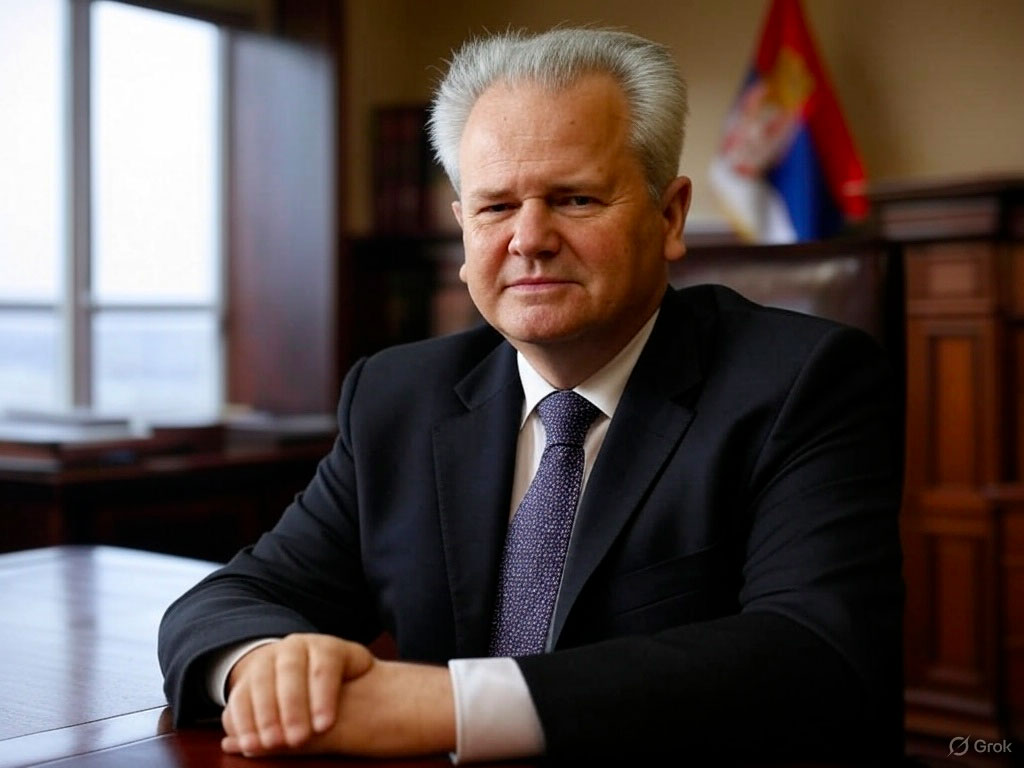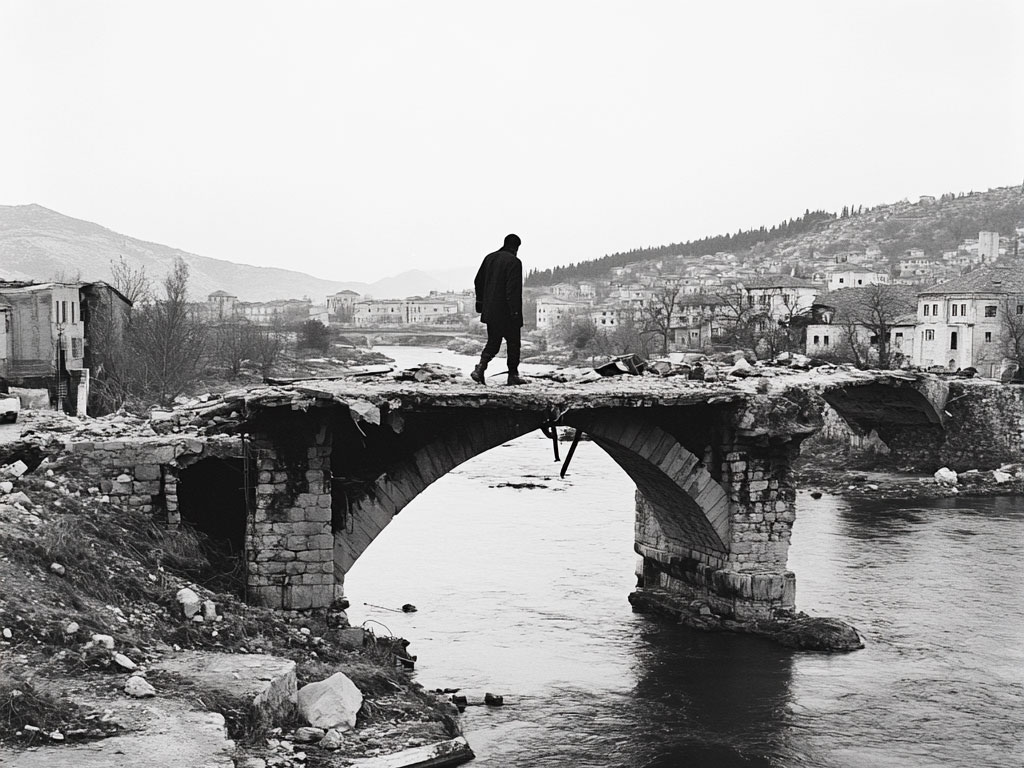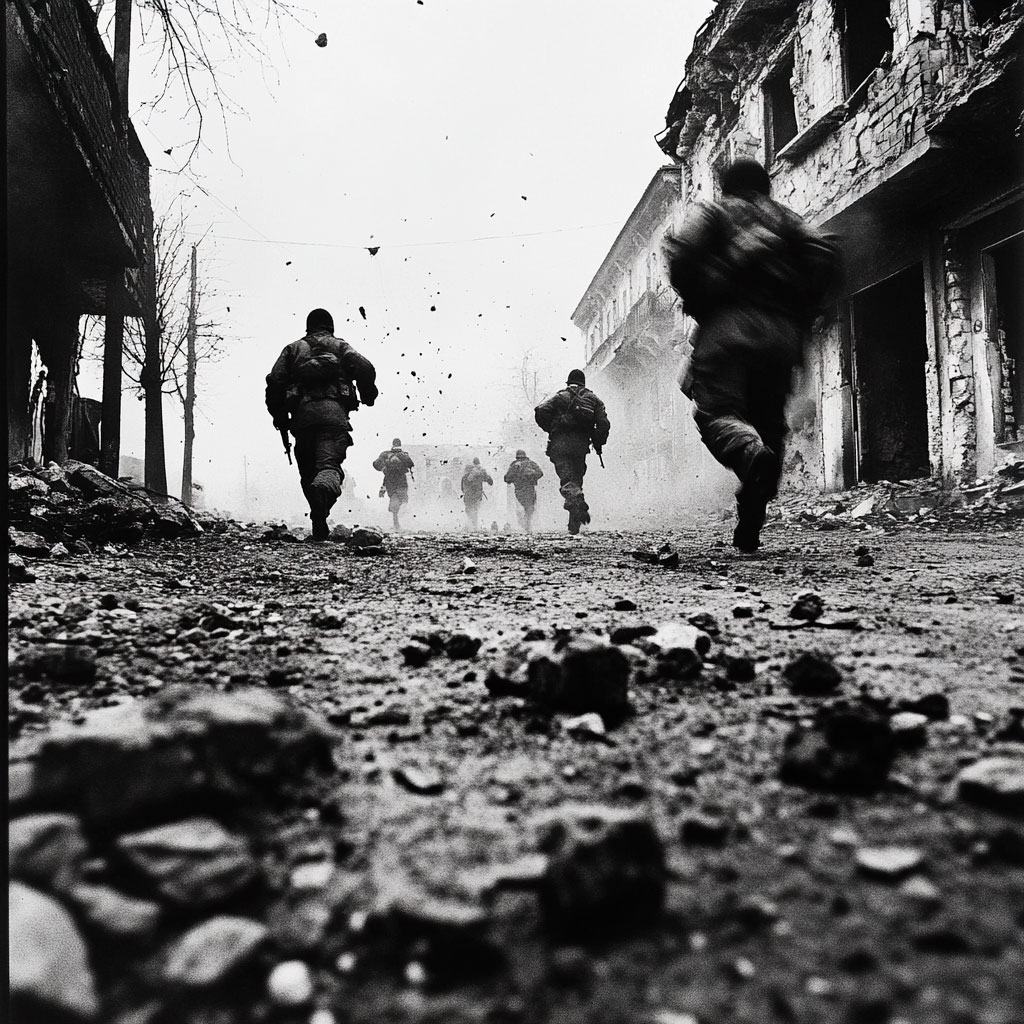An in-depth analysis of the Yugoslav Wars (1991–2001), covering causes, participants, leaders, key battles, turning points, and consequences.
The Yugoslav Wars were a series of conflicts from 1991 to 2001, following the disintegration of the Socialist Federal Republic of Yugoslavia. The wars were marked by ethnic tensions, nationalist movements, and the struggle for territorial control among the republics of Slovenia, Croatia, Bosnia and Herzegovina, Serbia, Montenegro, and Macedonia. Key conflicts included the Ten-Day War in Slovenia, the Croatian War of Independence, the Bosnian War, and the Kosovo War. These wars resulted in significant loss of life, widespread displacement, and numerous war crimes, including ethnic cleansing and genocide. International interventions, particularly by NATO and the United Nations, played crucial roles in ending the conflicts. The wars concluded with the establishment of several independent nations and the prosecution of war crimes by international tribunals.
What Were the Reasons for the Yugoslav Wars (1991–2001)
The Yugoslav Wars were precipitated by a combination of political, economic, and ethnic factors.
Political Factors:
The death of President Josip Broz Tito in 1980 left a power vacuum in Yugoslavia. His leadership had suppressed nationalist sentiments and maintained unity among the diverse ethnic groups. Post-Tito, the federal government weakened, and republics sought greater autonomy. The rise of nationalist leaders, notably Slobodan Milošević in Serbia, exacerbated tensions. Milošević’s push for Serbian dominance alarmed other republics, leading to declarations of independence by Slovenia and Croatia in 1991.
Economic Factors:
Yugoslavia faced a severe economic crisis in the 1980s, characterized by high inflation, unemployment, and debt. Economic disparities between the more prosperous northern republics (Slovenia and Croatia) and the poorer southern ones (Bosnia and Herzegovina, Macedonia, Montenegro, and Serbia) fueled resentment. The northern republics were reluctant to subsidize the south, intensifying calls for independence.
Ethnic Factors:
Yugoslavia was a multi-ethnic state with significant populations of Serbs, Croats, Bosniaks, Slovenes, Macedonians, Montenegrins, and Albanians. Historical grievances, religious differences, and cultural distinctions contributed to mutual distrust. The rise of nationalist rhetoric and propaganda inflamed ethnic tensions, leading to fears of persecution and prompting preemptive actions by various groups.
International Factors:
The end of the Cold War and the weakening of the Soviet Union reduced external support for Yugoslavia’s unity. Western nations were initially hesitant to intervene, and their recognition of the independence of Slovenia and Croatia in 1992 further destabilized the region. The lack of a cohesive international response allowed conflicts to escalate.
The Yugoslav Wars were the result of a complex interplay of political instability, economic hardship, ethnic divisions, and inadequate international intervention.

Who Was Involved in the Yugoslav Wars (1991–2001)
The Yugoslav Wars involved multiple actors, including republics, ethnic groups, and international organizations.
Republics and Ethnic Groups:
- Slovenia: Declared independence in 1991, leading to the Ten-Day War against the Yugoslav People’s Army (JNA).
- Croatia: Declared independence in 1991. Faced opposition from ethnic Serbs within its borders, leading to the Croatian War of Independence.
- Bosnia and Herzegovina: Declared independence in 1992. The Bosnian War ensued, involving Bosniaks, Croats, and Serbs.
- Serbia and Montenegro: Formed the Federal Republic of Yugoslavia in 1992. Supported Serb forces in Croatia and Bosnia.
- Macedonia: Declared independence peacefully in 1991 but faced internal ethnic tensions.
- Kosovo Albanians: Sought independence from Serbia, leading to the Kosovo War in 1998–1999.
International Organizations:
- United Nations (UN): Deployed peacekeeping forces and established the International Criminal Tribunal for the former Yugoslavia (ICTY).
- North Atlantic Treaty Organization (NATO): Conducted airstrikes against Bosnian Serb forces in 1995 and against Yugoslavia during the Kosovo War in 1999.
- European Union (EU): Engaged in diplomatic efforts and provided humanitarian aid.
Paramilitary Groups:
- Serbian Paramilitaries: Groups like Arkan’s Tigers and the White Eagles were involved in ethnic cleansing and atrocities.
- Croatian Defence Forces (HOS): Paramilitary wing of the Croatian Party of Rights, involved in the Croatian and Bosnian conflicts.
- Kosovo Liberation Army (KLA): Fought for Kosovo’s independence from Serbia.
The involvement of these diverse actors, each with their own agendas and grievances, contributed to the complexity and brutality of the Yugoslav Wars.
The Leaders of the Yugoslav Wars (1991–2001)
Several political and military figures directed the course of the Yugoslav Wars, influencing strategies, alliances, and the scale of violence across the region.
Slobodan Milošević (Serbia):
President of Serbia from 1989 to 1997 and later of the Federal Republic of Yugoslavia until 2000. Milošević promoted Serbian nationalism and aimed to centralize power. He supported Serbian paramilitary groups and regular forces in conflicts across Croatia, Bosnia and Herzegovina, and Kosovo. He was arrested in 2001 and tried at the International Criminal Tribunal for the former Yugoslavia (ICTY) for war crimes, crimes against humanity, and genocide. He died in detention in 2006.
Franjo Tuđman (Croatia):
President of Croatia from 1990 until his death in 1999. Tuđman led the country through the Croatian War of Independence and supported Bosnian Croats during the Bosnian conflict. His nationalist policies also included the expulsion of Serbs from areas recaptured during Operation Storm in 1995. Though not indicted, Tuđman’s leadership was heavily criticized by international observers.
Alija Izetbegović (Bosnia and Herzegovina):
First President of the Republic of Bosnia and Herzegovina (1992–1996). He led the Bosniak (Muslim) population during the Bosnian War. His government was the target of aggression from both Bosnian Serbs and Bosnian Croats. Izetbegović signed the Dayton Accords in 1995, ending the war and establishing a new political structure for Bosnia and Herzegovina.
Radovan Karadžić (Bosnian Serb Republic):
President of Republika Srpska (1992–1996), the Bosnian Serb entity. Karadžić led the political effort to form a Serb state within Bosnia and supported ethnic cleansing campaigns. He was convicted by the ICTY in 2016 for genocide, war crimes, and crimes against humanity, notably for the Srebrenica massacre, where over 8,000 Bosniak men and boys were killed in July 1995.
Hashim Thaçi (Kosovo):
A leader of the Kosovo Liberation Army (KLA) during the Kosovo War (1998–1999). Thaçi later became Prime Minister and then President of Kosovo. In 2020, he was indicted for war crimes and crimes against humanity by the Kosovo Specialist Chambers in The Hague.
Each leader shaped events through nationalistic policies, military alliances, and decisions that often prioritized ethnic control over coexistence, with lasting effects on the political landscape of the Balkans.
Was there a decisive moment?
The Yugoslav Wars spanned a decade and included multiple fronts and conflicts, but there was no single decisive moment that brought the entire series of wars to a halt. However, specific turning actions in each conflict shifted momentum and triggered new political or military outcomes. Among them, the most influential was NATO’s intervention in the Kosovo War in 1999, which directly forced a military and political resolution.
During the Bosnian War, several events shifted the balance. The Srebrenica massacre in July 1995, in which over 8,000 Bosniak men and boys were killed by Bosnian Serb forces, marked a turning point in international engagement. The incident provoked global condemnation and directly influenced NATO’s decision to launch Operation Deliberate Force in August 1995, targeting Bosnian Serb military infrastructure.
Following this intervention, the U.S.-brokered Dayton Peace Accords were signed in December 1995. This ended the war in Bosnia and restructured the country into two semi-autonomous entities. It did not resolve all tensions but froze the conflict and marked a moment of diplomatic closure for the most violent phase of the wars.
In Kosovo, the decisive moment came when NATO launched a 78-day bombing campaign against the Federal Republic of Yugoslavia starting on March 24, 1999. The operation was triggered by escalating violence and displacement of Kosovo Albanians by Serbian forces. The intervention bypassed the UN Security Council due to Russian opposition and represented NATO’s most extensive air operation to date.
The air campaign severely damaged Yugoslav military assets and infrastructure, including targets in Belgrade. Facing economic collapse, military fatigue, and international isolation, Slobodan Milošević accepted the Kumanovo Agreement on June 9, 1999. Serbian forces withdrew from Kosovo, and a UN peacekeeping mission was established under UN Security Council Resolution 1244.
These events did not resolve all underlying political tensions, but they forced military withdrawals and halted further armed conflict. The decisions to intervene militarily, especially by NATO, defined the endgame for several key fronts of the wars, making these moments the closest equivalents to decisive turning points in a fragmented series of conflicts.

Major battles of the Yugoslav Wars (1991–2001)
The Yugoslav Wars consisted of multiple conflicts across different regions, each marked by intense and often prolonged military engagements. Several battles had strategic or symbolic importance and led to major shifts in territorial control.
Ten-Day War (Slovenia, June 1991)
This brief conflict began after Slovenia declared independence from Yugoslavia. The Yugoslav People’s Army (JNA) attempted to assert control over border posts and key infrastructure. Slovenian Territorial Defence forces resisted effectively. The fighting resulted in around 70 casualties. A ceasefire was agreed on July 7, and the JNA withdrew, effectively recognizing Slovenia’s de facto independence.
Siege of Vukovar (Croatia, August–November 1991)
One of the longest and most destructive battles in the Croatian War of Independence, the Siege of Vukovar involved Yugoslav Army and Serbian paramilitaries encircling the town. Croatian defenders held the city for 87 days despite being outnumbered and undersupplied. When the town fell in November, around 2,000 people had died, and thousands were deported. The Vukovar Hospital massacre that followed became a major war crimes case.
Siege of Sarajevo (Bosnia, April 1992–February 1996)
This was the longest siege in modern warfare. Bosnian Serb forces surrounded the city for 1,425 days, targeting civilians, infrastructure, and cultural heritage. Approximately 13,000 people were killed, including 5,400 civilians. The siege became a symbol of the Bosnian War and led to increased international media coverage and eventual NATO involvement.
Battle of Mostar (Bosnia, 1993–1994)
Initially a united effort by Bosniak and Croat forces against Serbs, the alliance collapsed, and Mostar became the center of Bosniak–Croat fighting. The Old Bridge (Stari Most), a 16th-century Ottoman structure, was destroyed by Croatian Defence Council artillery in November 1993. The city suffered severe urban destruction and high civilian casualties.
Operation Storm (Croatia, August 1995)
A massive military offensive launched by Croatia to recapture the Serb-held Krajina region. Over 100,000 Croatian soldiers participated. The offensive lasted four days, and the Croatian Army rapidly regained territory. Around 200,000 Serbs fled the region, and reports of looting and killings followed. It marked the end of significant Serbian military presence in Croatia.
Kosovo conflict: Battle of Košare (April–June 1999)
A lesser-known but intense battle between the Kosovo Liberation Army (KLA), supported by NATO air strikes, and Yugoslav Army forces near the Albanian border. The KLA attempted to open a supply route into Kosovo. The fighting resulted in heavy casualties on both sides and was seen as a tactical failure for the KLA but contributed to the broader pressure that led to Milošević’s withdrawal.
Each of these battles illustrated the fragmentation and complexity of the wars, with shifting alliances, varied terrains, and ethnic tensions shaping the course of engagements. The use of paramilitaries, indiscriminate shelling, and urban warfare marked all major battles. Civilian populations bore a disproportionate share of the suffering, as sieges and offensives often targeted non-combatants as a tactic to assert political or ethnic control.
Was there a turning point?
There was no single event that shifted the entire decade of conflicts at once, but several coordinated actions by international actors, combined with internal military setbacks and political changes, contributed to a broad turning point by the mid-1990s.
The NATO bombing campaign during Operation Deliberate Force in August–September 1995 was critical. This operation came after the Srebrenica massacre and the shelling of Sarajevo on August 28, 1995, which killed 43 civilians. The attack prompted immediate NATO action, targeting Bosnian Serb positions across Bosnia and Herzegovina. The airstrikes degraded the Bosnian Serb Army’s capabilities and directly pressured its political leadership.
Simultaneously, Croatia’s Operation Storm in August 1995 eliminated the self-declared Republic of Serbian Krajina in central Croatia. This removed a key strategic base for Serbian forces and signaled that Serbia could no longer hold territory outside its borders without external cost. Operation Storm also changed the refugee dynamics, as over 200,000 Serbs were displaced within a matter of days.
The combination of these two military developments—airstrikes and territorial losses—forced Serbian leaders to negotiate. This directly led to the Dayton Peace Accords, signed in December 1995. The agreement ended the war in Bosnia and set the framework for the political structure of the country. While tensions remained, and governance was complex and fragile, open armed conflict was stopped.
In Kosovo, the turning point came later. Years of repression and growing Albanian resistance escalated into open conflict by 1998. The Rambouillet talks in early 1999 failed, and following reports of massacres and expulsions, NATO launched Operation Allied Force in March 1999. This bombing campaign lasted 78 days and severely damaged Yugoslav infrastructure and military positions. In June 1999, Serbia withdrew from Kosovo.
These military and diplomatic events combined to shift the wars from open combat to political negotiation or international administration. The involvement of NATO and the United States was key. Without external pressure, the conflicts were unlikely to stop, as local actors had entrenched positions and ongoing territorial objectives. Thus, the turning points occurred not through decisive battlefield victories, but through internationally imposed outcomes that changed the cost-benefit balance for the local powers.

Consequences of the Yugoslav Wars (1991–2001)
The consequences of the Yugoslav Wars were severe and long-lasting, both regionally and internationally. The wars led to massive human losses, population displacement, economic collapse, and a reshaping of the political geography of Southeast Europe.
Human toll and displacement
Across all conflicts, an estimated 130,000 to 140,000 people were killed, including over 100,000 in Bosnia and Herzegovina alone. Civilian casualties made up a significant portion of the total deaths. The wars also produced around 4 million refugees and internally displaced persons, many of whom never returned to their original homes. Ethnic cleansing campaigns, particularly in Bosnia and later in Kosovo, involved forced removals, mass executions, rape, and the destruction of cultural and religious buildings.
Economic damage
The wars destroyed infrastructure across multiple countries. Key cities such as Sarajevo, Mostar, Vukovar, and Pristina were left in ruins. Industrial output collapsed, tourism disappeared, and unemployment soared. Serbia and Montenegro suffered economic sanctions from 1992 to 2000, which deepened poverty. The region experienced a loss of up to 50% of GDP in the 1990s, with recovery in many areas only beginning in the mid-2000s.
Political fragmentation
The Socialist Federal Republic of Yugoslavia broke into seven internationally recognized states: Slovenia, Croatia, Bosnia and Herzegovina, North Macedonia, Montenegro, Serbia, and Kosovo (which declared independence in 2008, though not universally recognized). The Dayton Agreement established a highly decentralized government in Bosnia and Herzegovina, with deep political division between the Federation of Bosnia and Herzegovina and Republika Srpska. Kosovo remained under UN administration from 1999 to 2008, and tensions between ethnic Albanians and Serbs persist.
International justice and trials
The International Criminal Tribunal for the former Yugoslavia (ICTY) indicted 161 individuals for war crimes, crimes against humanity, and genocide. Among them were Slobodan Milošević, Radovan Karadžić, Ratko Mladić, and dozens of Croatian and Bosniak commanders. These trials marked a new phase in international law enforcement but were often viewed in the region as politically biased.
Military and political consequences
NATO’s interventions in Bosnia and Kosovo altered its strategic posture and established a precedent for humanitarian intervention without UN approval. The wars also shifted the EU’s enlargement policy, as several successor states entered formal processes for EU integration, with Slovenia joining in 2004 and others in different stages of accession.
The wars left behind unresolved ethnic divisions, political fragmentation, and deep social scars that continue to affect regional stability and governance today.
Back to the Wars section